Are you interested in the intersection of art and craftsmanship? These are the applied art museums you should visit in Germany:
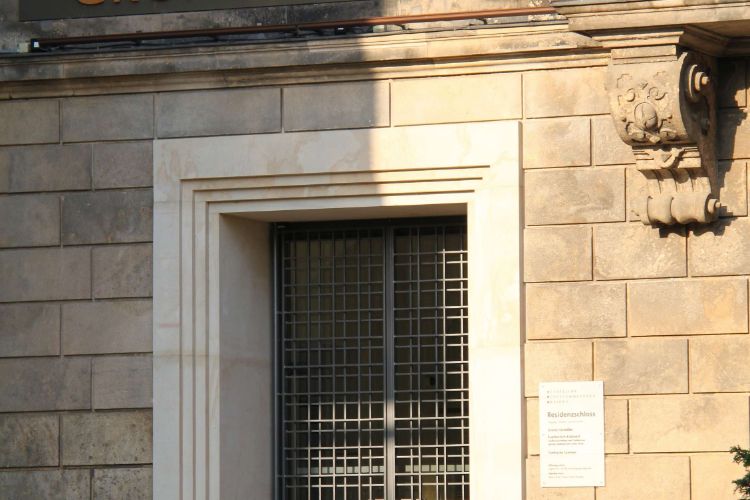
Green Vault
DresdenThe Green Vault (Grünes Gewölbe) is a museum in Dresden that holds the largest collection of treasures in Europe and contains many exhibits from the Baroque to Classicism. The Green Vault is named after the formerly malachite green painted column bases and capitals of the main rooms. The museum open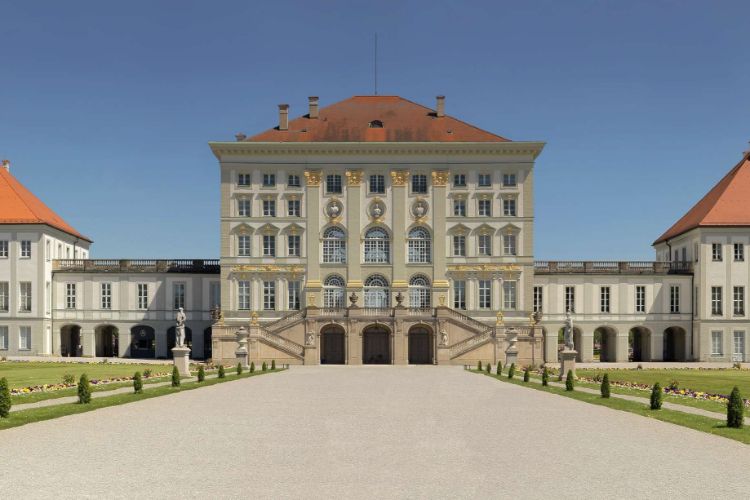
Nymphenburg Palace
MunichDesigned by Agostino Barelli, the name of this palace literally translates as the Castle of the Nymphs. When the Bavarian royalty in the 17th century wanted to take a summer break, they would go to the Nymphenburg Palace. Today, it is open to the public and home to several historical museums. You ca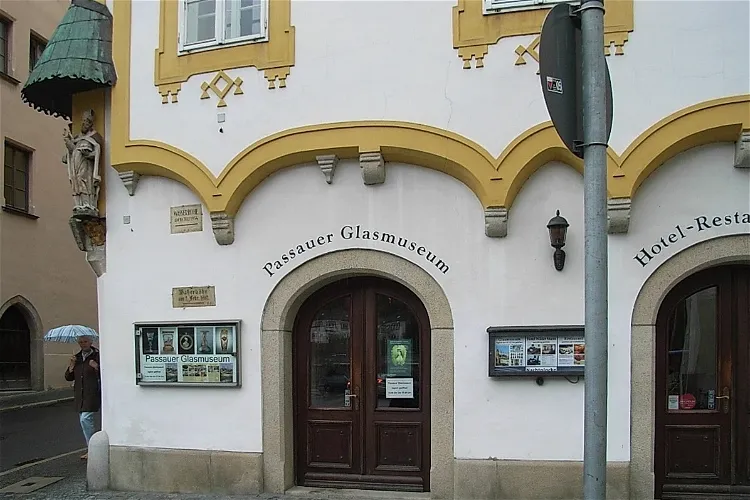
Passau Glass Museum
PassauThe Passau Glass Museum is renowned for its extensive collections, which are considered the largest in the world in three categories: European art glass, Bohemian glass, and glass made by Johann Loetz. These collections offer a unique opportunity to explore the rich history and diverse styles of glassmaking in Europe and beyond.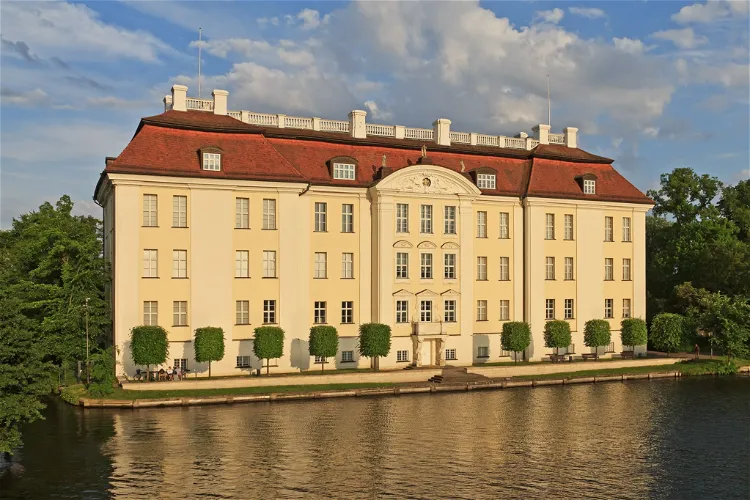
Köpenick Palace
BerlinKöpenick Palace is a unique baroque palace that is surrounded by water. It was built by the Hohenzollern electors of Brandenburg and is located on an island in the Dahme river. This location adds to the charm and beauty of the palace, making it a picturesque spot for visitors.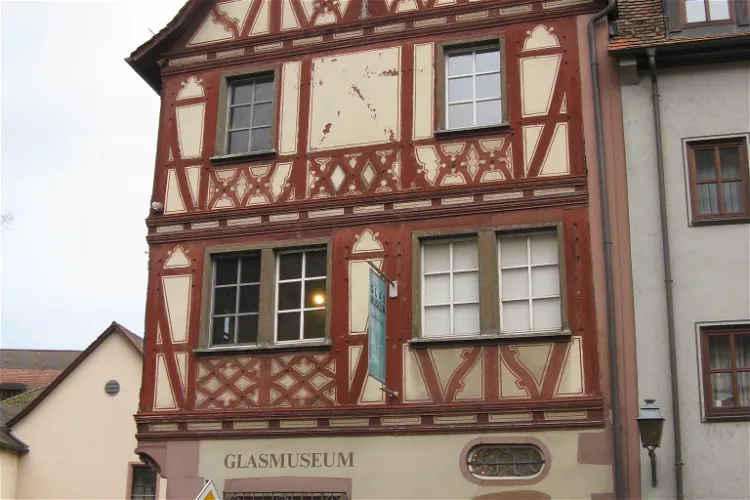
Glasmuseum Wertheim
WertheimThe Glasmuseum in Wertheim, Baden-Württemberg, is a unique institution that presents and documents the history and application of glass. From antiquity to present-day high-tech products, the museum offers a comprehensive overview of the evolution of glass and its various uses over the centuries. It's a fascinating journey through time, showcasing the versatility and importance of this material in different eras and contexts.
Passau Glass Museum
PassauThe Passau Glass Museum is renowned for its extensive collections, which are considered the largest in the world. These collections include European art glass, Bohemian glass, and glass made by the famous glassmaker, Johann Loetz. This vast array of glass art showcases the diversity and evolution of glassmaking techniques and styles over the centuries.
Fabergé Museum
Baden-BadenThe Fabergé Museum is situated in the spa town of Baden Baden, Germany. It was inaugurated in May 2009 by Aleksandr Ivanov. The museum is a significant destination for those interested in the history and artistry of Fabergé creations.
Couven Museum
AachenThe Couven Museum, known as Couven-Museum in German, is situated in the city of Aachen, in the North Rhine-Westphalia region of Germany. This location is significant as it places the museum in a region rich in history and culture, making it an interesting destination for tourists.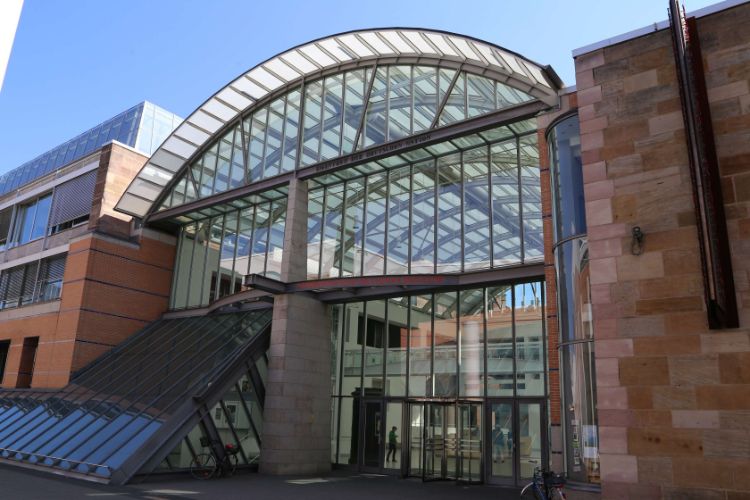
Germanisches Nationalmuseum
NurembergThe Germanisches Nationalmuseum is the largest museum of cultural history in Germany, located in Nuremberg. The museum holds and exhibits a large collection of items related to German culture and art from prehistoric times to the present day. The collection consists of around 1,3 million objects of- 10
Gießkannenmuseum
GießenThe Gießkannenmuseum, located in the city of Gießen in central Hesse, is a unique museum dedicated to watering cans and other irrigation instruments. It offers a unique perspective on these everyday objects, showcasing their variety in form and material. 
Museum für Angewandte Kunst
GeraThe Museum für Angewandte Kunst (MAK) is a museum of applied arts located in Gera. It is one of the four municipal museums in the city, offering a unique insight into the world of applied arts. The museum is a significant cultural institution in Gera, contributing to the city's rich artistic heritage.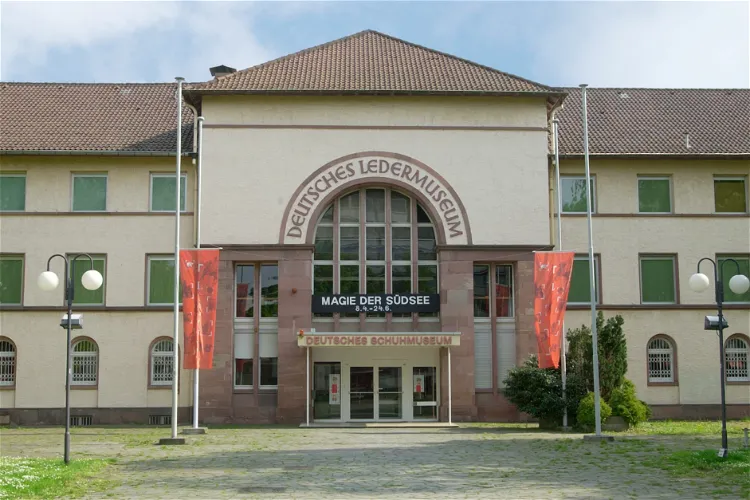
German Leather Museum
Offenbach am MainThe German Leather Museum, known as Deutsches Ledermuseum in German, is a significant cultural institution located in Offenbach am Main, Germany. This museum is dedicated to showcasing the global use of leather in crafts, art, and everyday life.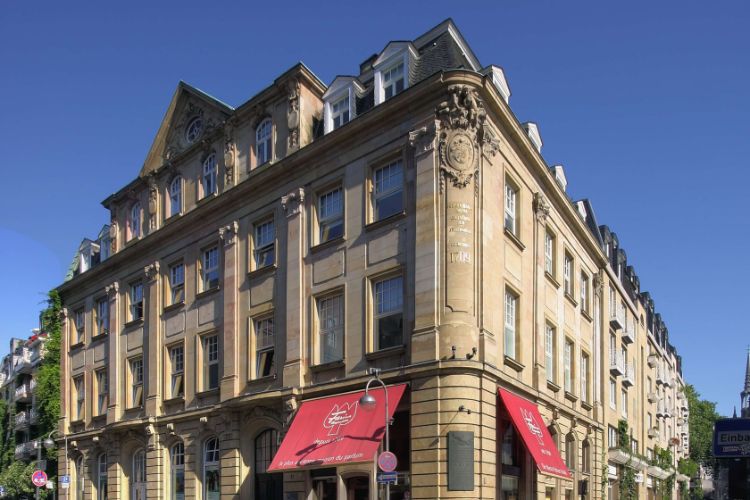
Fragrance Museum Farina-House
CologneThe Fragrance Museum Farina-House is a museum in Cologne that is dedicated to fragrances and more specifically that illustrates the production methods of perfume throughout the various stages with a focus on Eau de Cologne. The Fragrance Museum Cologne is housed in the eldest fragrance factory still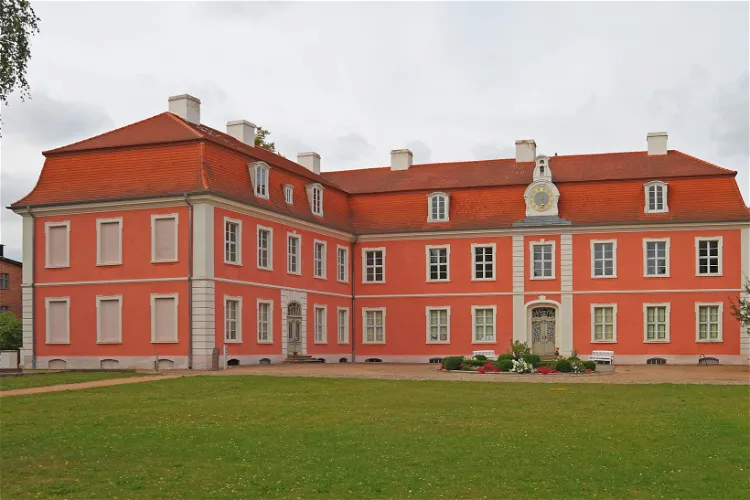
Schloss Museum Wolfshagen
Groß Pankow (Prignitz)Schloss Wolfshagen is situated in the district of the same name, within the municipality of Groß Pankow. It is approximately eight kilometers west of Pritzwalk in the northwest of Brandenburg. The castle is located on the Stepenitz, about four kilometers away from the B 189.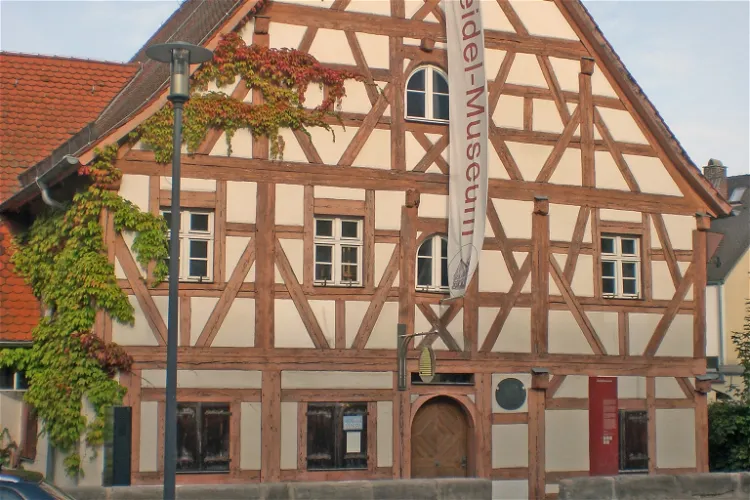
Zeidelmuseum
FeuchtThe Zeidelmuseum, established in 1986, is a beekeeping museum situated in the former Hutzlerhaus in Feucht. This location was chosen due to Feucht's historical significance as a center for beekeeping since the Middle Ages. The museum offers a unique insight into the history and techniques of beekeeping, making it an interesting destination for those interested in history, nature, and beekeeping.
Icon Museum Recklinghausen
RecklinghausenThe Icon Museum in Recklinghausen, established in 1956, holds a significant place in Western Europe as it is the most prominent of its kind in the region. This museum is a testament to the rich cultural and historical heritage of the area, offering visitors a unique opportunity to explore and appreciate the art of iconography.
Factory of Dreams
Annaberg-BuchholzThe Factory of Dreams, located in Annaberg-Buchholz, is an interactive museum that offers a unique experience to its visitors. It is home to the Marie-Ströher Memorial Collection, which is a significant private collection of folk art from the Ore Mountains region. The museum was opened to the public on October 29, 2010, and has since been a popular destination for tourists and art enthusiasts alike.
First German Tile Museum
Boizenburg/ElbeThe First German Tile Museum Boizenburg, opened in 1998, is an art and technology museum situated in the heart of Boizenburg/Elbe. It is housed in the building at Reichenstraße 4 in the center of the old town of Boizenburg.
Saarländisches Künstlerhaus
SaarbrückenThe Saarländisches Künstlerhaus Saarbrücken e. V. serves as a workspace and meeting place for cultural creators in the fields of visual arts, literature, and arts and crafts. This institution is situated in the city of Saarbrücken, providing a hub for artists and craftsmen in the region.
Museum for Concrete Art
IngolstadtThe Museum for Concrete Art in Ingolstadt is a space dedicated to showcasing the diversity of Concrete Art. The museum hosts changing exhibitions on an approximately 800 m² exhibition space, providing visitors with a broad perspective on this unique art form.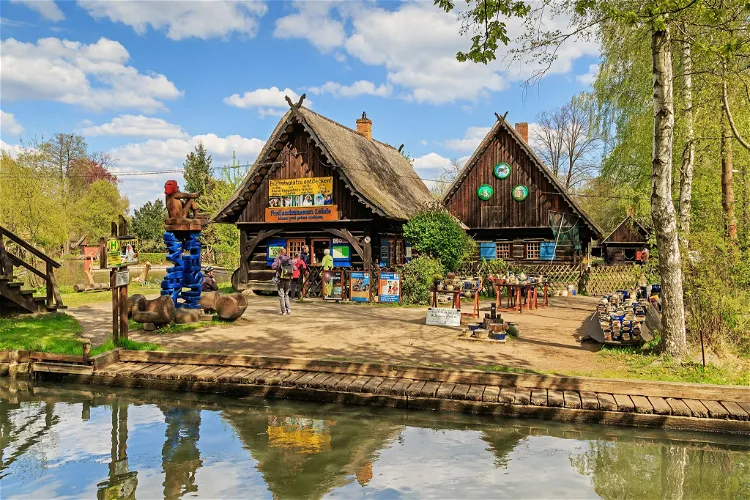
Freilandmuseum Lehde
Lübbenau/SpreewaldThe Freilandmuseum Lehde is an open-air museum located in Lehde. It is dedicated to showcasing life in the Spreewald region during the 19th century. Visitors can get a glimpse of the past and understand the lifestyle, culture, and traditions of the people who lived in this region during that time.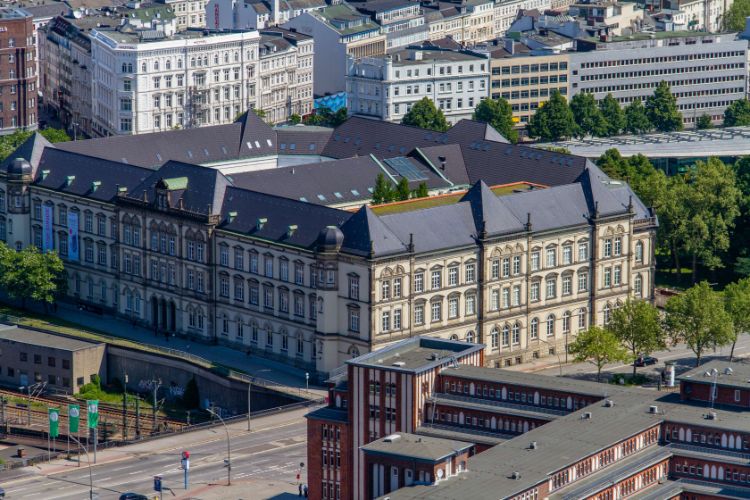
Museum für Kunst und Gewerbe
HamburgThe Museum für Kunst und Gewerbe in Hamburg is a museum of fine, applied and decorative arts that features various collections, including special Islamic art, expressionistic art and a Japanese teahouse. So don't hesitate and come explore. Be sure to check the official website prior to your visit fo
Deutsches Glasmalerei-Museum Linnich
LinnichThe Deutsches Glasmalerei-Museum in Linnich is a unique institution in Germany, dedicated to the art of stained glass. It houses a wide range of exhibits, both historical and contemporary, featuring works by renowned artists such as Georg Meistermann, Brian Clarke, and Otmar Alt. This museum provides a comprehensive overview of the evolution and diversity of stained glass art, making it a fascinating destination for art enthusiasts and history buffs alike.
German Textile Museum
KrefeldThe German Textile Museum boasts a collection of over 30,000 objects from all corners of the world, spanning from antiquity to the present day. This vast collection offers visitors a unique opportunity to explore the history and diversity of textiles and clothing. The museum's collection is one of the most important internationally, with historically valuable textiles and clothing.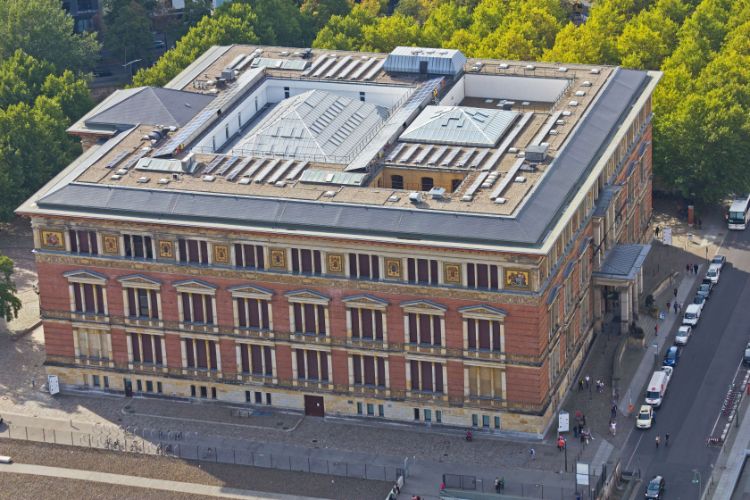
Martin-Gropius-Bau
BerlinThe Martin-Gropius-Bau, previously used as a museum for applied art, is an exhibition building and art hall in Berlin. The building is intended for large exhibitions with a temporary character, but also the presentation of archaeological collections, linking these to current issues and discourses. U
The Royal Porcelain Collection
DresdenThe Royal Porcelain Collection (the Dresden Porcelain Collection (Porzellansammlung) is a museum in Dresden that is housed in the Zwinger Palace. The collection includes around 20,000 porcelain artefacts, important being the traditional Chinese and Japanese porcelain acquired by Augustus the Strong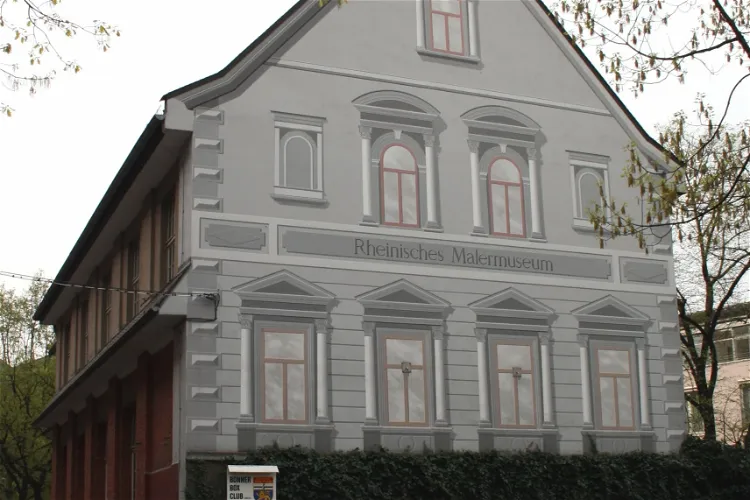
Rheinisches Malermuseum
BonnThe Rheinisches Malermuseum is an art museum located in Bonn, Germany. It was established in the year 1985 by a private association. The museum is known for its exhibits on forgotten artistic techniques and tools of the painter, providing a unique insight into the history of painting.
Glasmuseum
RheinbachThe Glasmuseum in Rheinbach, established in 1968, is situated in the Himmeroder Hof at Himmeroder Wall 6. This location is steeped in history and provides a unique setting for the museum.
Eggemuseum Altenbeken
AltenbekenThe Egge Museum, situated in Altenbeken, North Rhine-Westphalia, is a unique destination that primarily displays exhibits from the era when iron extraction and processing played a significant role in the region. Visitors can gain insights into the historical importance of iron industry in Altenbeken and explore a variety of exhibits that reflect this period.- 30
Töpfereimuseum
LangerweheThe Töpfereimuseum is situated in the town of Langerwehe, within the Düren district of North Rhine-Westphalia. This location is easily accessible and offers a unique cultural experience for those interested in pottery and its history. 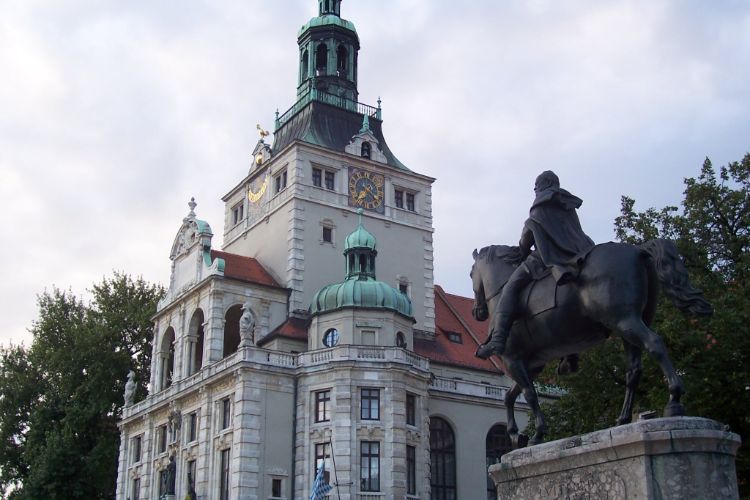
Bavarian National Museum
MunichThe Bavarian National Museum (Bayerisches Nationalmuseum) is a museum of applied art in Munich that holds and exhibits objects originating from the Middle Ages onward. The museum was founded in 1855 by King Maximilian II of Bavaria and houses a varied collection of sculptures and visual art collecti
Käthe-Kruse-Puppen-Museum
DonauwörthThe Käthe-Kruse-Puppen-Museum is situated in the former Capuchin monastery in Donauwörth. This location adds a historical touch to the museum, making it not only a place to appreciate the art of doll making but also a site to experience a piece of Donauwörth's history.
Schmuckmuseum
PforzheimThe Schmuckmuseum Pforzheim, located in Germany, is a unique museum that specializes in the display of jewelry and watches. This museum offers a unique opportunity for visitors to explore the intricate world of jewelry and timepieces, showcasing a wide range of pieces from different periods and cultures.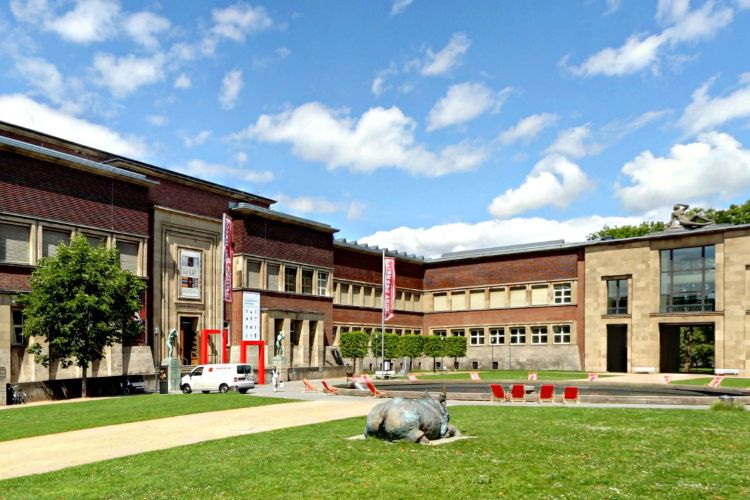
Museum Kunstpalast
DüsseldorfThe Kunstpalast Museum, also known as the Museum Kunst Palast is a museum in Düsseldorf. The museum is located on the site of an older museum from 1902 that was rebuilt twice. Paintings and sculptures from the period between the Middle Ages and the 21st century are exhibited in Museum Kunstpalast. I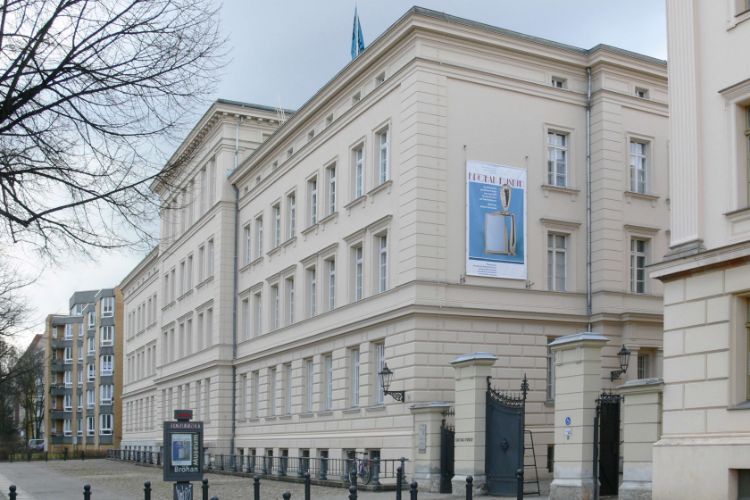
Brohan Museum
BerlinThe Brohan Museum is a small museum in Berlin that is housed in a late-neoclassical building. The collection was compiled by Karl H. Bröhan, who collected works of art belonging to Art Nouveau and Art Deco. The artists of the Berlin Sezession movement in particular are well represented. The museum a
Vitra Schaudepot
Weil am RheinThe Vitra Schaudepot is a publicly accessible museum depot located on the Vitra Campus in Weil am Rhein. This unique architectural piece was designed by the renowned Swiss architecture firm Herzog & de Meuron. It serves as a significant part of the Vitra Campus, offering visitors a chance to explore a vast collection of exhibits.
Museum of Applied Art
CologneThe Museum für Angewandte Kunst (Museum of Applied Art, MAKK) is a museum of applied arts in Cologne in Germany. The museum holds and exhibits a collection that contains more that 100,000 objects of European applied art from the 10th century to the present that includes jewellery, porcelain, furnitu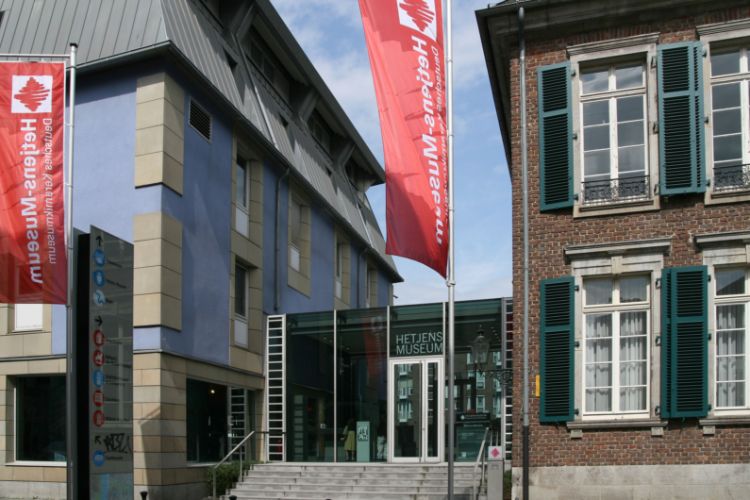
Hetjens Museum
DüsseldorfThe Hetjens - Deutsches Keramikmuseum is a museum of ceramic history in Düsseldorf. Because of the up to 8000 years old pieces that originate from all parts of the world in the museum's collection, it is considered the most universal institute of its kind. The permanent exhibition shows the world o
Sammlung Ludwig
BambergThe Sammlung Ludwig in Bamberg is recognized as one of the most significant private collections in the field of faience and porcelain. This collection, housed in the Altes Rathaus since 1995, is a testament to the passion and dedication of the collector couple Peter and Irene Ludwig. It offers a unique opportunity for visitors to explore a wide range of artifacts from different periods and regions.
Deutsches Damast- und Frottiermuseum
GroßschönauThe Deutsches Damast- und Frottiermuseum in Großschönau offers a unique insight into the local textile history. Visitors can see functional, historical Großschönau looms used for canvas, damask, jacquard and terry cloth. This provides a tangible connection to the past and allows visitors to understand the intricate processes involved in textile production.
International newspaper museum
AachenThe International Newspaper Museum in Aachen is a unique institution that presents the history of newspapers and the subject of press history. It provides a comprehensive overview of the evolution of print media, from its earliest forms to the present day. Visitors can explore a vast collection of newspapers from around the world, gaining insights into the role of the press in shaping societies and cultures.
Klingspor Museum
Offenbach am MainThe Klingspor Museum in Offenbach am Main is a unique institution dedicated to modern and contemporary book and lettering art. The museum's collection is based on the private collection of Karl Klingspor, a type foundry operator. This makes it a special destination for those interested in typography, graphic design, and book art.
German Goldsmiths´ House
HanauThe German Goldsmith's House, located in the old town of Hanau, is a museum that has been showcasing jewelry and hollowware since the early 20th century. This historic building, which was once the town hall, offers visitors a unique opportunity to explore a wide range of exhibits, not only from Germany but from around the world. The museum is a testament to the city's rich history and its longstanding tradition in the goldsmith's craft.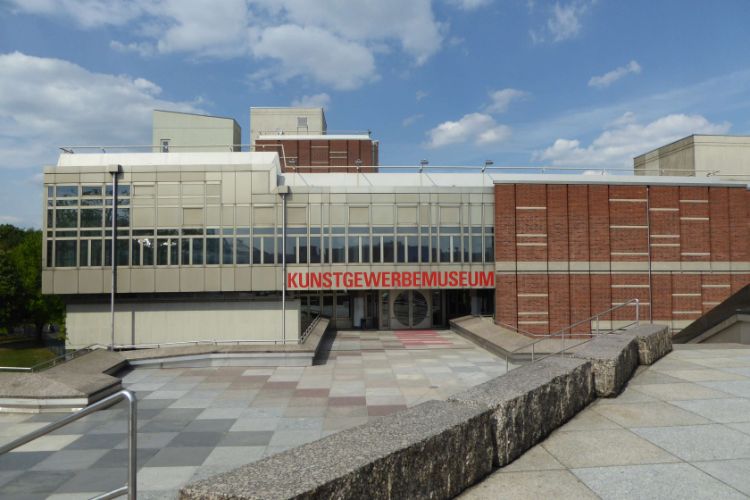
Museum of Applied Art
BerlinThe Kunstgewerbemuseum is the Museum of Applied Art of Berlin. The headquarters is part of the Kulturforum Berlin and is part of the Staatliche Museen zu Berlin. The museum shows the development of arts and crafts in Europe from the Middle Ages to the present. All style periods are represented with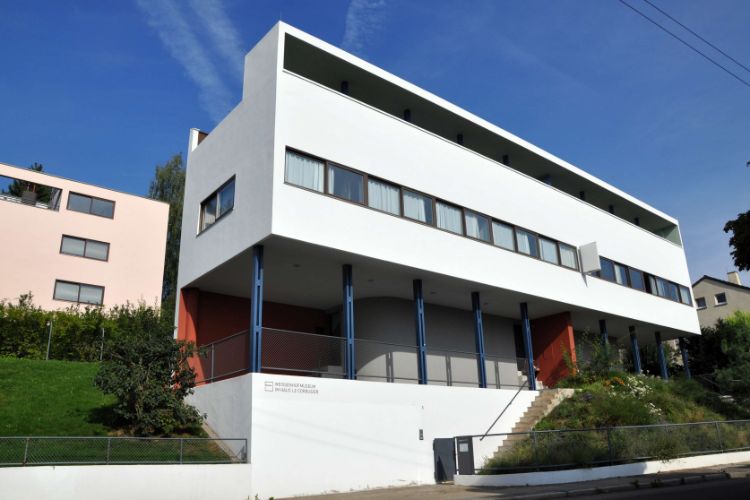
Weissenhofmuseum im Haus Le Corbusier
StuttgartThe Weissenhof Estate is a milestone in modern architecture and was built in 1927 by 17 international architects. It has been a listed building since 1958. Architects Le Corbusier and Pierre Jeanneret also built a semi-detached house and a detached house for the estate, which were designated UNESCO
Werkbundarchiv – Museum der Dinge
BerlinThe Museum chronicles the product culture of the 20th & 21st centuries, a culture marked by mass production & industrial manufacturing. At the core of our institution is the archive of the Deutsche Werkbund. Founded in 1907, this group of German artists, designers & manufacturers was one of the lead
Keramikmuseum Westerwald
Höhr-GrenzhausenThe Keramikmuseum Westerwald in Höhr-Grenzhausen is known as the German Collection for Historical and Contemporary Ceramics. This museum is a significant destination for those interested in the history and evolution of ceramics, both from a historical and contemporary perspective.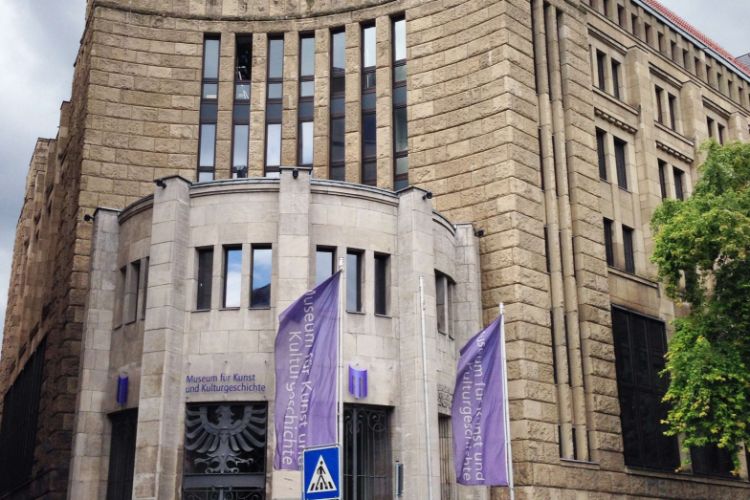
Museum of Art and Art History
DortmundThe Museum für Kunst und Kulturgeschichte or MKK (Museum of Art and Cultural History) is a municipal art museum in Dortmund. The Museum of Art and Art History in Dortmund is housed in the 1924 former Municipal Savings Bank, built by Hugo Steinbach. The collections of paintings, sculptures, furniture
Nussknackermuseum Neuhausen
DittersbachThe Nussknackermuseum is a unique museum situated in the scenic town of Neuhausen/Erzgeb. This location offers a blend of cultural heritage and natural beauty, making it an ideal destination for tourists seeking a unique experience.
Fränkisches Museum Feuchtwangen
FeuchtwangenThe Fränkisches Museum Feuchtwangen is a significant cultural institution located in the city of Feuchtwangen in the Middle Franconian district of Ansbach. The museum boasts an extensive exhibition area of over 2000 m², making it a spacious venue for visitors to explore and learn about the region's history and culture.
Papiermuseum Düren
DurenThe Papiermuseum Düren is one of seven museums in Germany that focus on paper or have a department dedicated to paper. This makes it a unique destination for those interested in the history and production of paper. The museum is located in the city of Düren, North Rhine-Westphalia, and is managed by the city itself.
Wenzel-Hablik-Museum
ItzehoeThe Wenzel-Hablik-Museum is home to the estate of the German-Bohemian artist Wenzel Hablik (1881–1934). Hablik, who lived and worked in Itzehoe from 1907 until his death, is considered one of the most important representatives of German architectural expressionism. The museum showcases his legacy, which includes his work as a painter, architect, interior designer, designer, and visionary.
European Museum of Modern Glass
RödentalThe European Museum of Modern Glass is situated in the scenic Rosenau Castle Park in Rödental, Germany. This location not only offers a unique setting for the museum but also provides visitors with the opportunity to explore the beautiful park and castle grounds. The museum is easily accessible and offers ample parking for visitors.
Meißener Porzellan-Sammlung Stiftung Ernst Schneider
OberschleißheimThe Meißener Porzellan-Sammlung Stiftung Ernst Schneider is a significant destination for those interested in porcelain artistry. It houses the second largest collection of 18th century Meissen porcelain in the world, surpassed only by the collection in Dresden. This makes it a unique place to explore the rich history and craftsmanship of Meissen porcelain.
Museum Aschenbrenner
Garmisch-PartenkirchenMuseum Aschenbrenner, located in Garmisch-Partenkirchen, is an art and exhibition house that offers a unique cultural experience. It hosts three permanent exhibitions that focus on porcelain, dolls, and cribs. In addition to these, the museum also organizes several special exhibitions annually, providing a diverse range of displays for visitors to explore.
Porzellanikon
SelbThe Porzellanikon is a museum complex located in Selb and Hohenberg an der Eger, Germany. It is dedicated to the production of porcelain and ceramics. The museum complex was formed as a result of the merger of several museums including the European Industrial Museum for Porcelain, the European Museum of Technical Ceramics, the Rosenthal Museum, and the German Porcelain Museum in Hohenberg an der Eger.
Rosenmuseum Steinfurth
Bad NauheimThe Rosenmuseum, located in Steinfurth, a district of Bad Nauheim in Hesse, has been a significant cultural institution since 1974. The museum is dedicated to the art and cultural history of the rose, offering visitors a unique insight into the significance of this flower in various aspects of human culture and history.
State Museum for Art and Cultural History
OldenburgThe State Museum for Art and Cultural History in Oldenburg is a unique cultural institution located in the city of Oldenburg in Lower Saxony. The museum is spread across three closely situated sites: the Castle, Augusteum, and Prinzenpalais. Each of these sites offers a distinct collection and experience, making the museum a diverse and enriching destination for art and history enthusiasts.
Museum Giersch
FrankfurtThe Museum Giersch is an art gallery in Frankfurt that hosts a changing series of exhibitions that display the art and cultural history of the Rhine-Main area. The museum is housed in a neoclassical villa built in 1910 and aims to promote the regions's cultural identity. The Museum Giersch hosts exh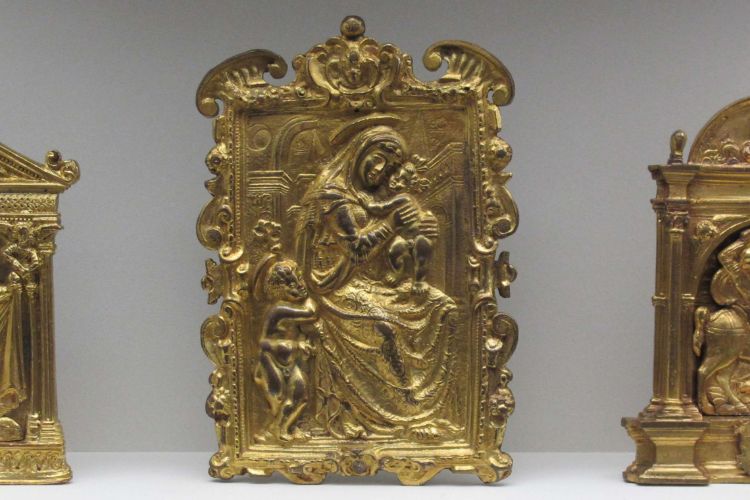
Grassi Museum for Applied Arts
LeipzigThe Grassi Museum of Applied Arts is a museum in Leipzig and is the second oldest museum of decorative arts in Germany. The museum holds an excellent collection of decorative art with pieces dating back to the Antiquity. The Grassi Museum of Applied Arts holds around 90,000 items, of European and no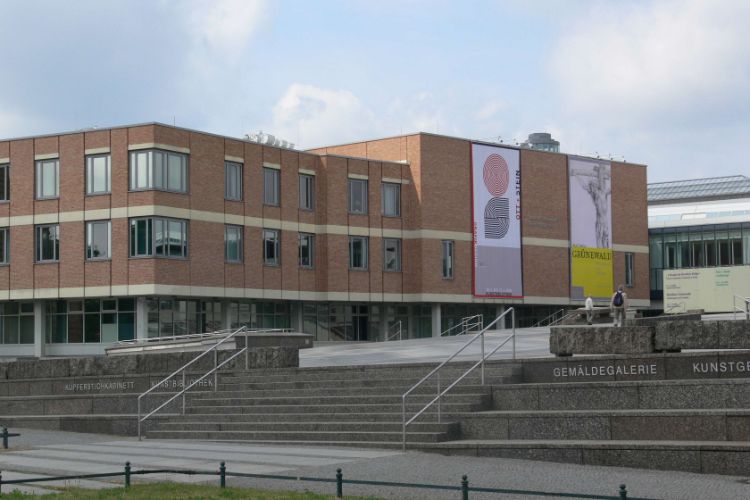
Art Library
BerlinThe Berlin Art Library (Kunstbibliothek Berlin) is located on the Kulturforum in Berlin-Tiergarten and is one of Germany's leading institutions specializing in the literature of Art History. It holds around 400,000 volumes. It mainly acquires and researches scientific literature on the history of Eu
Museum of Art and Cultural History
MarburgThe Museum für Kunst und Kulturgeschichte, also known as MKK or the Museum of Art and Cultural History, is a municipal museum located in Dortmund, Germany. It is a significant cultural institution in the city, offering a wide range of exhibits and collections for visitors to explore.
Princely Treasury Thurn und Taxis
RegensburgThe Princely Treasury Thurn und Taxis, which was inaugurated in 1998, is a branch of the Bavarian National Museum. This museum is located in the former Marstall of the St. Emmeram Castle in Regensburg. It was established to preserve and display the significant art objects of the Thurn und Taxis house, which were acquired by the Free State of Bavaria in 1993 as a way to settle inheritance taxes.
Barockhaus
GörlitzThe Barockhaus Neißstraße 30 in Görlitz is a significant structure from the Baroque period that has been part of the city's Cultural History Museum since 1951. This commercial and residential building is located in the heart of the old town, offering visitors a glimpse into the architectural and cultural history of the period.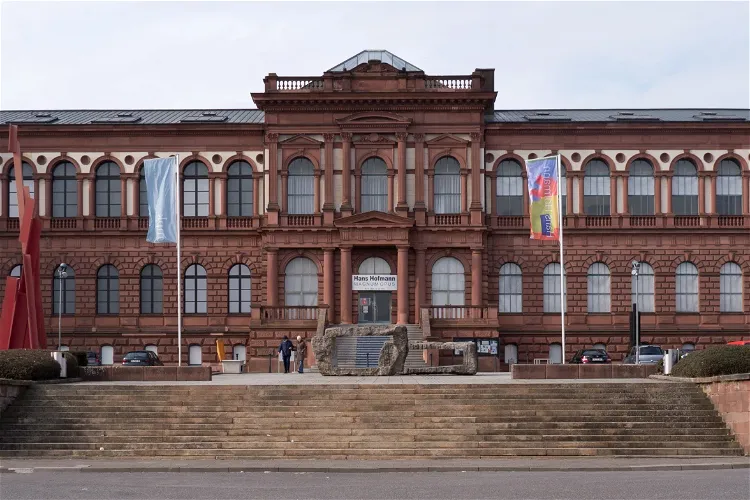
Museum Pfalzgalerie
KaiserslauternThe Museum Pfalzgalerie Kaiserslautern boasts a comprehensive collection of graphic art, making it a significant destination for art enthusiasts. The museum operates under the sponsorship of the Palatinate District Association, further emphasizing its importance in the region's cultural landscape.
Museum für Papier- und Buchkunst - Gemeinde Lenningen
OberlenningenThe Museum für Papier- und Buchkunst, or the Museum of Paper and Book Art, is situated in the Schlössle in Oberlenningen, a part of the Lenningen municipality in the Esslingen district of Baden-Württemberg. The museum was established in 1992 by the Scheufelen paper factory and is located on the second floor of the building.
Heimat- und Keramikmuseum Kandern
KandernThe Heimat- und Keramikmuseum Kandern is a local museum located in the city of Kandern, within the Lörrach district. The museum's primary focus is on ceramic arts and crafts, showcasing the rich history and craftsmanship of the region.
Schlossmuseum Ellwangen
Ellwangen (Jagst)Schloss ob Ellwangen, located in the east of Württemberg, has a rich history dating back to 1460. It served as the residence and seat of power for the Prince-Provosts of the Prince-Provostship of Ellwangen. From 1802/1803 to 1842, it was used as the electoral and royal residence. This historical significance adds to the charm and allure of the castle, making it a fascinating destination for tourists interested in history and architecture.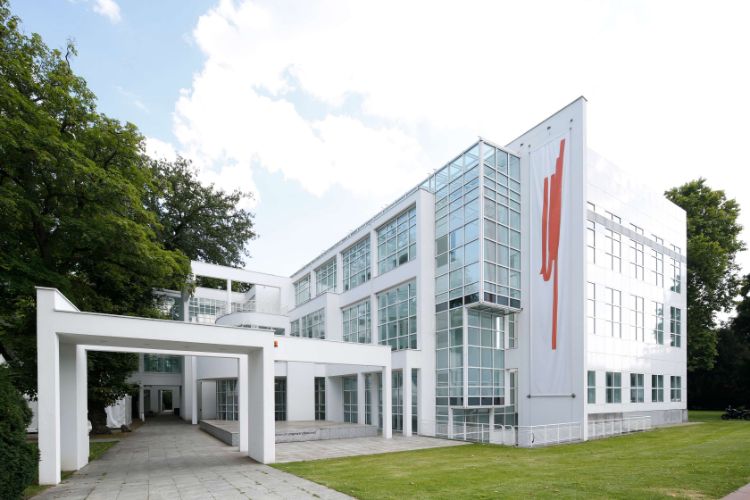
Museum Angewandte Kunst
FrankfurtThe Museum of applied art Frankfurt (Museum Angewandte Kuns Frankfurt) is a museum of artisanal art and design in Frankfurt with a special emphasis on design, fashion and the performative element. The collection comprises 65,000 pieces over a period of 5 centuries, with the main focus being European
Roentgen-Museum
NeuwiedThe Roentgen-Museum in Neuwied is a unique institution dedicated to the exploration of living culture. It is named after the renowned Neuwied furniture makers, Abraham Roentgen and David Roentgen, whose works are a significant part of the museum's collection. Visitors can expect to see a wide range of exhibits that reflect the craftsmanship and design sensibilities of these two influential figures.
Daetz-Centrum Lichtenstein
Lichtenstein/SachsenThe Daetz-Centrum, situated in the Schlosspalais of Lichtenstein/Sa, was home to a collection of sculptures from more than 30 countries between 2001 and 2022. This international competence center for wood carving art was named after its founders, Marlene and Peter Daetz, who established the Daetz Foundation in 1998. The collection showcased the diverse art and craft traditions of the world through the medium of wood.
Museum Schloss Fürstenberg
FürstenbergMuseum Schloss Fürstenberg is a unique destination for porcelain enthusiasts. Located in the municipality of Fürstenberg in the district of Holzminden in Lower Saxony, this museum is dedicated to the over 270-year tradition of the Fürstenberg porcelain manufacture. It is the only porcelain museum in Northern Germany, making it a special place for those interested in the history and art of porcelain making.
Keramik-Museum Berlin (KMB)
BerlinThe Keramik-Museum Berlin (KMB) (Museum of Ceramics Berlin) is a museum in Berlin where in special exhibitions, design classics and works by well-known ceramists are exhibited. The collection consists mainly of 19th and 20th century objects, including works by Peter Behrens, Charles Crodel, Margaret- 74
Internationales Phono & Radio Museum
DormagenThe museum houses two significant collections from collectors Volkmar Hess and Helmut Dietsch. Hess's collection includes around 400 phonographs, gramophones, and record players, ranging from Edison's first device to devices from the 1990s, along with an extensive collection of sound carriers, including 30,000 shellac records. Dietsch's collection comprises about 4,000 radios, tape recorders, tape devices, and televisions, including American and English radios from the 1920s and the first television built after the Second World War as reparation for the Soviet Union. 
Ostholstein-Museum
EutinThe Ostholstein-Museum Eutin is a significant art museum located in the district of Ostholstein, Schleswig-Holstein. It is housed in the former Marstall building, which is situated at the castle square of the Eutin Castle. This location adds a historical charm to the museum, making it an interesting destination for tourists who appreciate both art and history.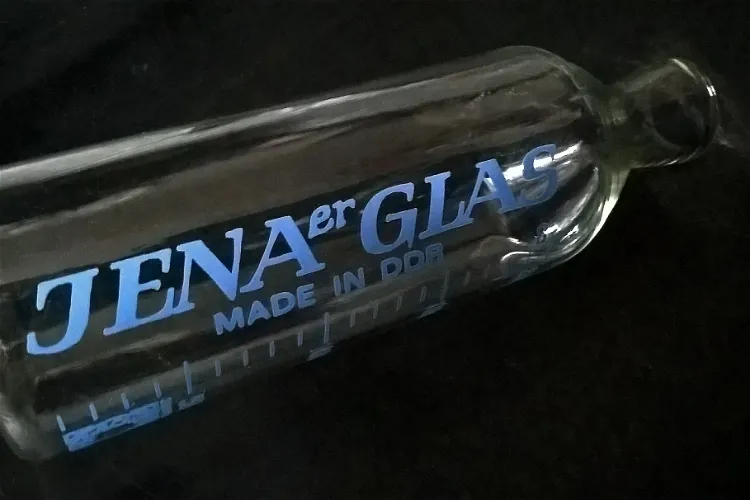
Museum form gestaltung in der ddr
WernigerodeDDR-Design, also known as socialist design or form design, refers to products that were designed and manufactured between 1949 and 1989 in the German Democratic Republic. The design is characterized by its functionality and reduction to the essentials. This design approach was a result of the scarcity of raw materials and the planned economy, which prioritized the longevity of the products.
CHAMBER OF ART AND CURIOSITIES
LandshutThe Chamber of Art and Curiosities, also known as Kunst- und Wunderkammer Burg Trausnitz, is a branch of the Bavarian National Museum. It is situated in the Trausnitz Castle in Landshut, Lower Bavaria. This museum is a significant part of the Bavarian National Museum and offers a unique insight into the art and curiosities of the Renaissance period.
Glasmuseum Bad Driburg
Bad DriburgThe Glasmuseum Bad Driburg is a city museum located in Bad Driburg, Germany. The museum is dedicated to the theme of glass, showcasing the history and artistry of glass production and refinement in the region since the 16th century. It is housed in the Heinz-Koch-Haus, a building named after a significant benefactor of the museum, Heinz Koch.
Textilmuseum Mindelheim
MindelheimThe Textilmuseum Mindelheim boasts one of the largest publicly accessible collections of paraments and other ecclesiastical textile treasures, dresses and robes, as well as lace and fans. This extensive collection offers a unique insight into the history and evolution of textiles, making it a fascinating destination for tourists interested in fashion, textiles, and history.
Keramik-Museum
BürgelThe Keramik-Museum Bürgel is a specialized museum for ceramics, situated in the heart of the pottery town Bürgel in Thuringia. It is conveniently located immediately north of the St. Johannes city church, making it easily accessible for visitors. The museum offers a unique insight into the rich history and craftsmanship of ceramics in the region.
German Ivory Museum Erbach
ErbachThe German Ivory Museum in Erbach, located in the Odenwald region, is dedicated to the art and craft of ivory and ivory carvings. This museum is a testament to the long-standing tradition of ivory craftsmanship in the town, offering visitors a unique insight into this intricate art form.
Keramion
FrechenKeramion is a ceramics museum located in Frechen, Germany. It is known for its exhibitions that showcase a wide range of ceramics, from historical pieces to modern and contemporary works. This museum offers a unique opportunity for visitors to explore the evolution of ceramics over time, making it an interesting destination for art enthusiasts and history buffs alike.
Frauenau Glass Museum
AlthütteThe Frauenau Glass Museum, located in Frauenau in the Lower Bavarian county of Regen, transitioned from a communal facility to a state-owned organisation in early 2014. It is now known as the State Museum of the History of Glass Culture and is managed by the Free State of Bavaria. This change signifies the importance and recognition of the museum at a state level.
Bauhaus Dessau
Dessau-RoßlauThe Bauhaus building in Dessau-Roßlau, Germany, is a significant piece of modern architecture. It was originally designed to house the Bauhaus school of art, design, and architecture. The building was constructed between 1925 and 1926, following the plans of the architect and director of the Bauhaus, Walter Gropius. This building is a major work of the functionalist movement and has been listed as a UNESCO World Heritage Site since 1996.
Das Kartoffelmuseum
MunichDas Kartoffelmuseum is the potato museum in Munich which is one of the more unusual places in the city. The museum covers all aspects of the vegetable, including art, history and its rise to fame.- 86
Wiedenbrücker Schule Museum
Rheda-WiedenbrückThe Wiedenbrücker Schule is a term that refers to the flourishing art and craft of Historicism that took place in Rheda-Wiedenbrück, North Rhine-Westphalia, and its surrounding areas in the 19th and early 20th centuries. This period saw a local network of workshops with complementary specializations, primarily producing ecclesiastical art. - 87
Sammlung Werner Löffler
ReichenschwandThe Sammlung Werner Löffler, also known as the Löffler Collection, is a unique private collection of historical seating furniture spanning three centuries. It is located in the charming town of Reichenschwand in Middle Franconia. This collection offers a fascinating journey through the evolution of seating furniture design and craftsmanship. - 88
German Playing Card Museum
LeinfeldenThe German Playing Card Museum, located in Leinfelden-Echterdingen, is a significant branch of the Württemberg State Museum. It is renowned for housing one of the largest public collections of playing cards in Europe. This makes it a unique destination for those interested in the history and art of playing cards. - 89
Porzellanmuseum Münster
MünsterThe Porzellanmuseum in Münster, a city in Westphalia, was inaugurated on November 16, 2003, in Gasselstiege. This museum is dedicated to the art of porcelain painting, a craft that has been practiced in Münster since the mid-19th century. - 90
Darmstädter Papiertheatersammlung
DarmstadtThe Darmstädter Papiertheatersammlung is a museum in Darmstadt, founded by teacher Walter Röhler. He started collecting original sheets for assembling paper theaters and also collected fully assembled stages. This museum offers a unique insight into the world of paper theater, a popular pastime in the bourgeois society of the 19th century. - 91
Keramikmuseum Rheinsberg
RheinsbergThe Keramikmuseum Rheinsberg is a specialized museum situated in the heart of Rheinsberg, in the district of Ostprignitz-Ruppin, Brandenburg. It is dedicated to showcasing the rich, over 250-year tradition of the Rheinsberg ceramic manufacturers. This museum provides a unique opportunity to delve into the history and craftsmanship of ceramic production in this region. - 92
Trachtenmuseum
OchsenfurtThe Trachtenmuseum in Ochsenfurt is a specialized museum that showcases regional costumes in their various forms. It provides a unique opportunity for visitors to explore the rich cultural heritage of the region through its traditional attire. The museum's collection includes a wide range of costumes, each with its own unique design and significance. - 93
Industrial monument Jakob Bengel
Idar-ObersteinDuring the 1920s and 1930s, the Jakob Bengel factory emerged as one of the leading manufacturers of fashion jewelry, particularly in the style of Art Deco. Rather than using gemstones in their creations, the company opted for the use of Galalith, a type of plastic.